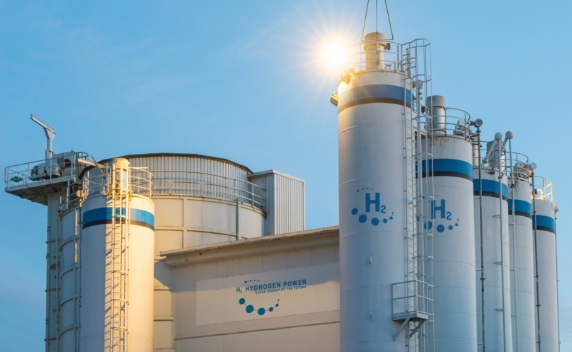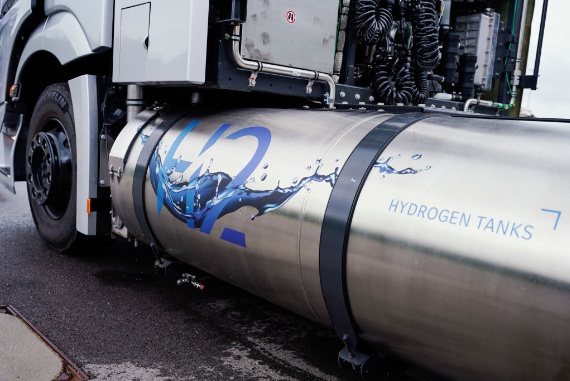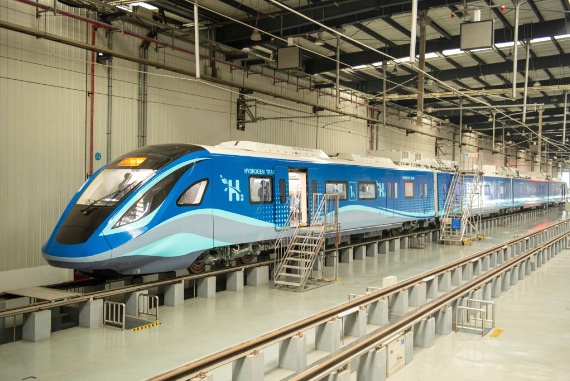Europe is turning to sustainable H2 as an energy vector that can meet the needs of hard-to-electrify sectors and be used for energy storage. The war in Ukraine and rising fossil fuel prices are accelerating the adoption of this technology as a way to achieve energy independence.
At the end of 2020, Spain set out its aspiration to become a world power in green hydrogen in a Roadmap (executive summary in English) that earmarked 8.9 billion euros of investment in this technology up to 2030. The forecasts spoke of having, by that date, at least 4 GW of installed electrolyser capacity, which is 10% of the total forecast for the entire EU; 150 hydrogen refuelling stations (or hydrogenerators); 7,500 hydrogen vehicles; two rail lines running on this fuel; and 25% of industrial hydrogen from renewable sources. The Roadmap is due to be revised in 2023, but until the new updated document is published, everything suggests that the ambition for this hydrogen from renewable sources “has not only not been lowered, but has been redoubled,” says Javier Brey, president of the Spanish Hydrogen Association (AeH2).

Europe is betting on electrolysis, the process of splitting a water molecule (H2O) into one oxygen atom and two hydrogen atoms (H2), using renewable energy and emitting no CO2 into the atmosphere. It is an energy vector that can accompany solar, wind and other energy sources in the energy transition, providing stability to the electricity system. “It brings management and storage capacity,” Brey reminds us. And it reaches sectors that are difficult or impossible to electrify: industries such as steel mills, heavy transport, aviation and the maritime sector.
Towards the end of energy dependence
In May 2022, the European Commission unveiled REPowerEU, a plan to “end” the EU’s reliance on fossil fuels, setting an annual green hydrogen production target of 10 million tonnes by 2030. To achieve this, it will have to increase the installed capacity planned for its territory from 40 GW to 140 GW. If Spain’s new Roadmap is to maintain its 10% share of total EU capacity, it will have to increase from 4 GW to 14 GW, Brey points out. He acknowledges that it will be difficult, but says that companies are prepared, and that, in fact, those initial 4 GW have already been exceeded.

The war in Ukraine and the steady rise in the price of fossil fuels have accelerated the transition to green hydrogen, says Brey. “The lack of security and the fragility of fossil fuel supplies was already there before the war; Europe imported 80% of its natural gas and 90% of its oil, and a third of that was bought from Russia. What has happened now is that the blindfold has come off,” he explains.
Indeed, the rising price of fossil fuels is undermining one of the main arguments against green hydrogen: its high cost. “It is not expensive if you look at the price of natural gas over the last 12 months,” Brey points out. Another drawback of the technology, according to its critics, is the huge consumption of water—a precious commodity that began trading on Wall Street in December 2020—used in the process. “The water needed to produce 4 GW is less than 0.5% of what is lost in the distribution networks,” Brey counters. Green H2 is also criticised for its limitations for mass use and the risk of increasing production without guaranteed demand.
First green hydrogen corridors
Criticisms aside, and there are some and they are well-argued, it is clear that the industry is hungry for green hydrogen projects in Spain. “Two Spanish consortiums have been set up to produce hydrogen trains for 2025, and Airbus is working on three prototypes of aircraft for 2035,” says Brey.
At the end of 2021, the Spanish government approved the Strategic Project for the Economic Recovery and Transformation (PERTE) of Renewable Energies, Renewable Hydrogen and Storage, which will mobilise public-private investments of more than 16.3 billion euros until 2025.
The first tenders for hydrogen projects were launched in the first half of 2022: the H2 Pioneers Programme, with financial support for demonstration plants, and the Innovative Value Chain Support Programmes, for the development of already industrialised technologies at different points in the value chain.
Iberdrola has built the largest green hydrogen plant in Europe in Puertollano (Ciudad Real), for the production of zero-emission fertilisers. “A 100 MW photovoltaic solar plant, a lithium-ion battery system with a storage capacity of 20 MWh and one of the largest electrolytic hydrogen production systems in the world (20 MW). All from 100 % renewable sources,” says the company’s website.

Brey predicts that 2023 will see the first green hydrogen clusters, valleys or corridors. “The idea is to create projects with a circular vision, integrating production, distribution and use,” he explains. Like the H2ValleyCat hydrogen valley in Catalonia: an amalgam of more than 100 public and private organisations with the Rovira i Virgili University as the glue. Or the Basque Hydrogen Corridor, an initiative of Petronor and Repsol with eight institutions, 12 knowledge centres and business associations and 58 companies, although the focus is on hydrogen in general, not only green hydrogen.
The recent news that Germany has joined H2Med—the hydrogen pipeline project to connect the Iberian Peninsula with the rest of the continent—is, according to Brey, the definitive proof that green hydrogen will be the great energy vector that will free Europe from energy dependence on third parties.
Comments on this publication